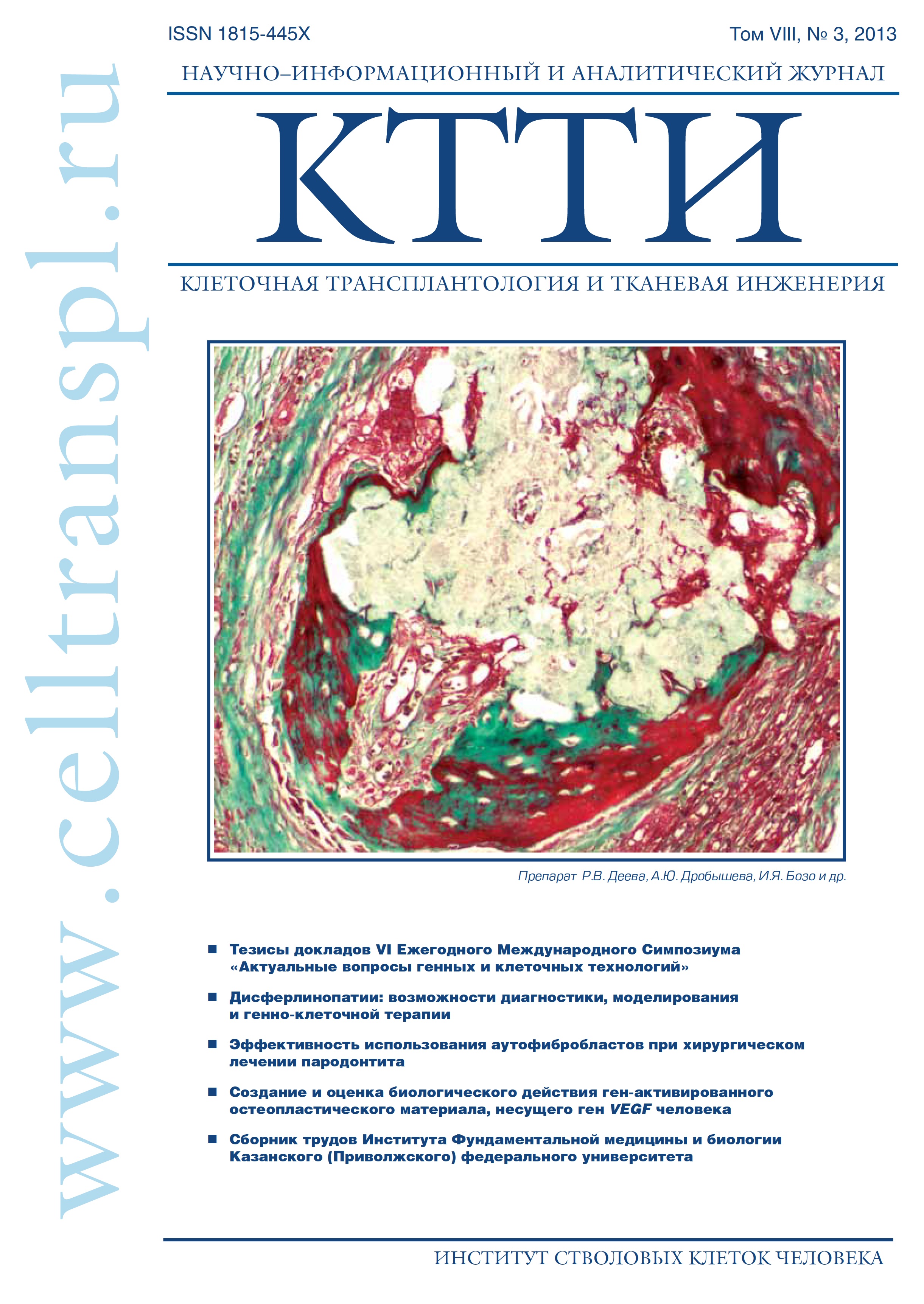Possible directions of human cord blood mononuclear cells differentiation in the regenerating rat liver
- Authors: Andreeva D.I1,2, Gazizov I.M1,2, Ylmaz T.S1, Kaligin M.S1,2, Gumerova A.A2, Kiyasov A.P2
-
Affiliations:
- Kazan State Medical University
- Kazan Federal University
- Issue: Vol 8, No 3 (2013)
- Pages: 95-100
- Section: Articles
- URL: https://genescells.ru/2313-1829/article/view/120567
- DOI: https://doi.org/10.23868/gc120567
- ID: 120567
Cite item
Abstract
Full Text
About the authors
D. I Andreeva
Kazan State Medical University; Kazan Federal UniversityKazan
I. M Gazizov
Kazan State Medical University; Kazan Federal UniversityKazan
T. S Ylmaz
Kazan State Medical UniversityKazan
M. S Kaligin
Kazan State Medical University; Kazan Federal UniversityKazan
A. A Gumerova
Kazan Federal UniversityKazan
A. P Kiyasov
Kazan Federal UniversityKazan
References
- Wiemann S.U., Satyanarayana A., Tsahuridu M. et al. Hepatocyte telomere shortening and senescence are general markers of human liver cirrhosis. FASEB 2002; 16: 935-42.
- Petersen B.E., Bowen W.C., Patrene K.D. et al. Bone marrow as a potential source of hepatic oval cells. Science 1999; 284: 1168- 70.
- Cardoso A.A., Li M.L., Batard P. et al. Release from quiescence of CD 34+38- human umbilical cord blood cells reveals their potentiality to engraft adults. PNAS USA 1993; 90: 8707-11.
- Terai S., Sakaida I., Yamamoto N. et al. An in vivo model for monitoring trans-differentiation of bone marrow cells into functional hepatocytes. Biochem. 2003; 134: 551-8.
- Vassilopoulos G., Wang P.R., Russel D.W. Transplanted bone marrow regenerates liver by cell fusion. Nature 2003; 422: 901-4.
- Hawley T.S., Hawley R.G., Totowa N.J. Methods in molecular biology: flow cytometry protocols, 2nd ed.: Humana Press Inc.; 2004.
- Rizvanov A.A., Kiyasov A.P., Gaziziov I.M. et al. Human umbilical cord blood cells transfected with VEGF, L1CAM do not differentiate into neurons but transform into vascular endothelial cells and secrete neuro-trophic factors to support neuro-genesis - a novel approach in stem cell therapy. Neurochemistry International 2008; 53: 389-94.
- Higgins G.M., Anderson R.M. Experimental pathology of the liver: I. Restoration of the liver of the white rat following partial surgical removal. Arch. Pathol. 1931; 12: 186-202.
- Michalopoulos G.K. Liver Regeneration. J. Cell. Physiol. 2007; 213: 286-300.
- Forbes S.J., Russo F.P., Rey V. et al. A significant proportion of myofibroblasts are of the bone marrow origin in human liver fibrosis. Gastroenterology 2004; 126: 955-63.
- Киясов А.П. Экспрессия десмина и цитокератинов № 8 и 18 в некроветворных клетках печени крыс. Онтогенез 1997; 28 (3): 217-22.
- Ishikawa T., Terai S., Urata Y. et al. Fibroblast growth factor 2 facilitates the differentiation of transplanted bone marrow cells into hepatocytes. Cell Tissue Res. 2006; 323: 221-32.
Supplementary files










